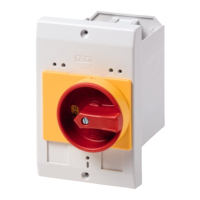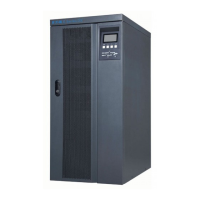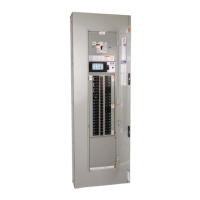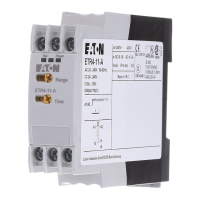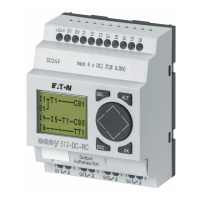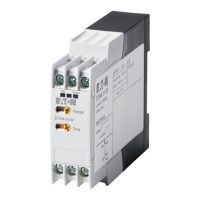Voltage Protection (Modules V[n])
There are several instances (stages) of the Voltage Protection module, but all of these
are generic and identically structured; in particular, these are not “specialized” to either
overvoltage or undervoltage protection!
You can specify for each instance (independently) during commissioning whether it shall
work as overvoltage or undervoltage protection. This is done with the parameter [Device
Planning] »V[n] . Mode«, which can be set to “Use” (overvoltage) or “V<” (undervoltage).
All other settings that are part of this instance are then adapted accordingly. For
example, the threshold value »V[n] . Pickup« is visible only if the instance is working
in overvoltage mode. If it is in undervoltage mode then »V[n] . Pickup« is automatically
disabled, and »V[n] . Pickup« gets visible instead.
Therefore an E-Series protection device does not use a specic name like “V<”, “V<<”
or “V>”, “V>>” for the voltage protection; it uses the generic module names V[1], V[2],
etc.
Usually the parameter [Protection Para / Set x / V-Prot / V[n]] »Measuring Mode« should be
set according to the Field Parameter setting »Main VT con«. However, the following can be
good to know:
If
»Main VT con« = “Open-Delta” then »Measuring Mode« is xed to “Phase to Phase”.
(Even if »Measuring Mode« is accidentally set dierently this setting is silently ignored.)
The nominal voltage Vn is dened as follows:
If
»Main VT con« = “Wye” then the user has the choice to set »Measuring Mode« either
to “Phase to Ground” or “Phase to Phase”.
In case of »Measuring Mode« = “Phase to Ground”, the nominal voltage Vn is dened as
follows:
In case of »Measuring Mode« = “Phase to Phase”, the nominal voltage Vn is dened as
follows:
Residual Voltage Protection (Modules 59[n])
The residual voltage can be measured via auxiliary windings da-dn (da [e]-dn [n]) in a
broken delta connection.
The calculation of the residual voltage is only possible if phase to neutral voltages are
applied to the measuring inputs of the protection device.
61www.eaton.comE-Series Family Quick Start Guide
4 Good to Know for Commissioning

